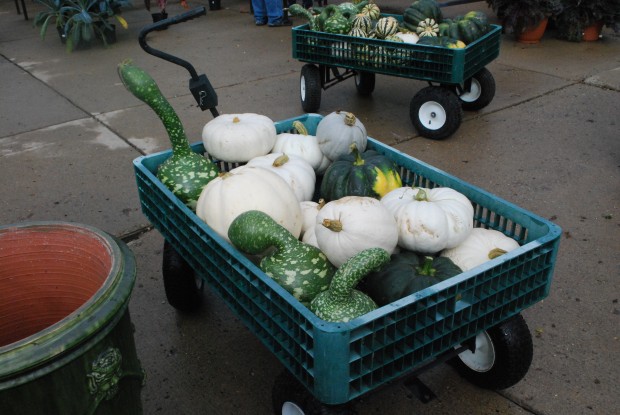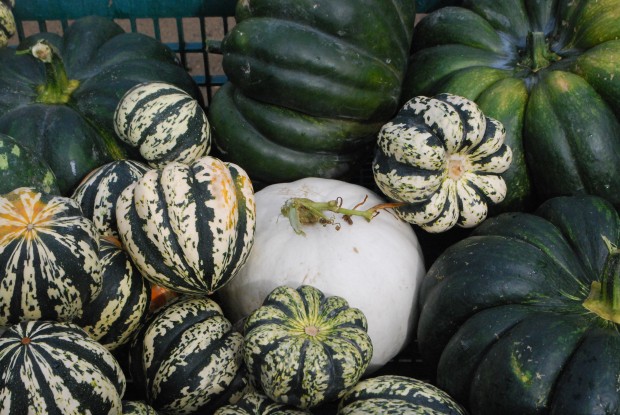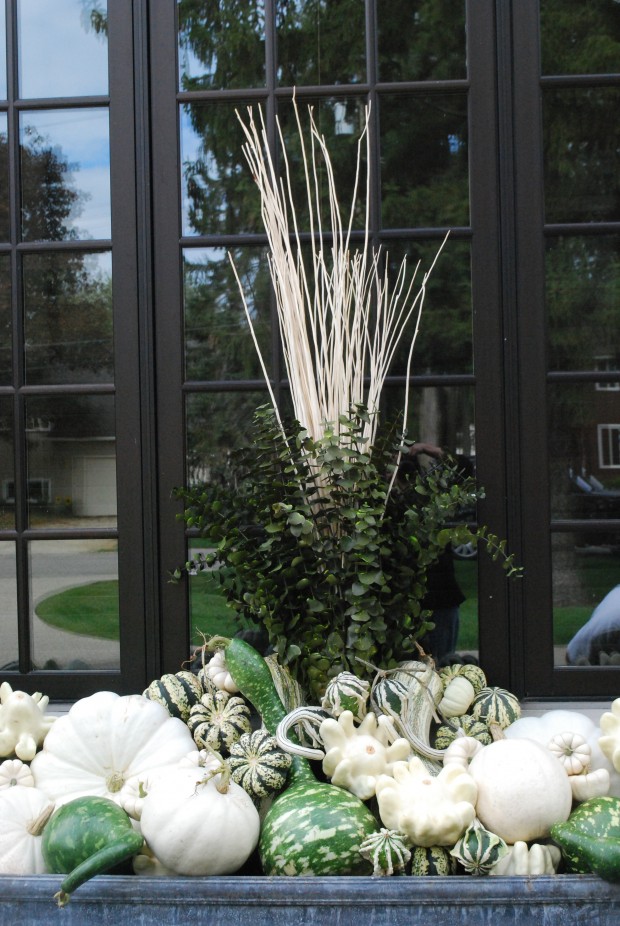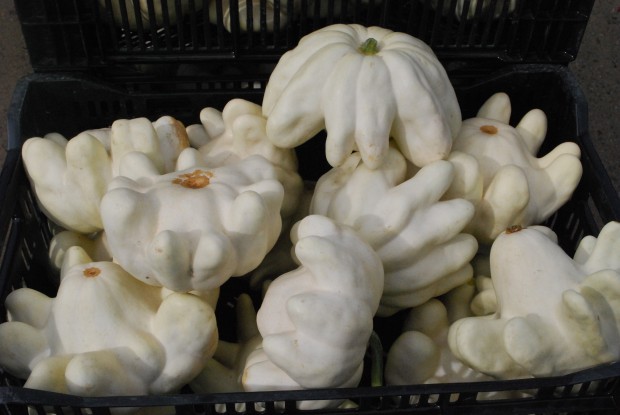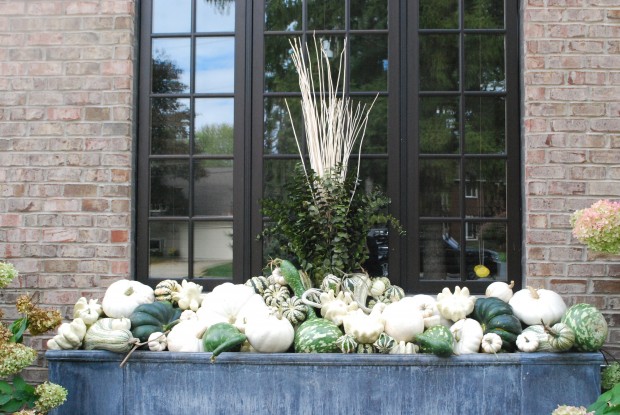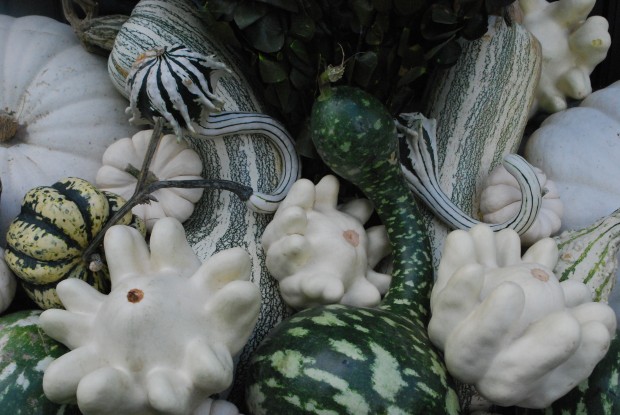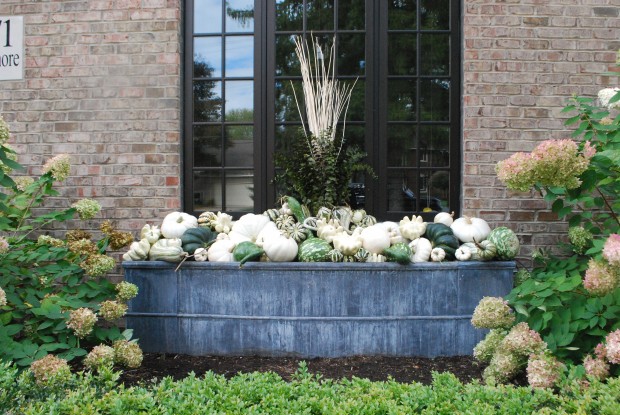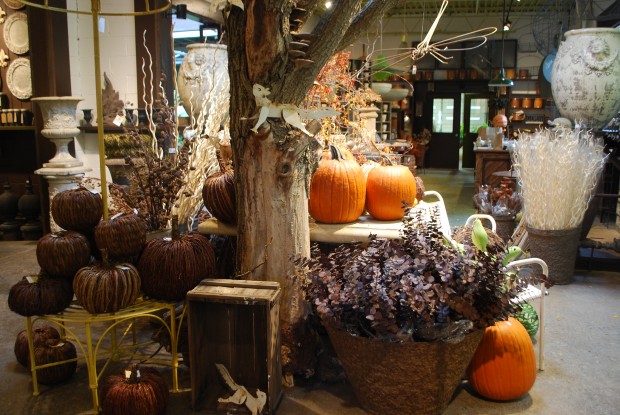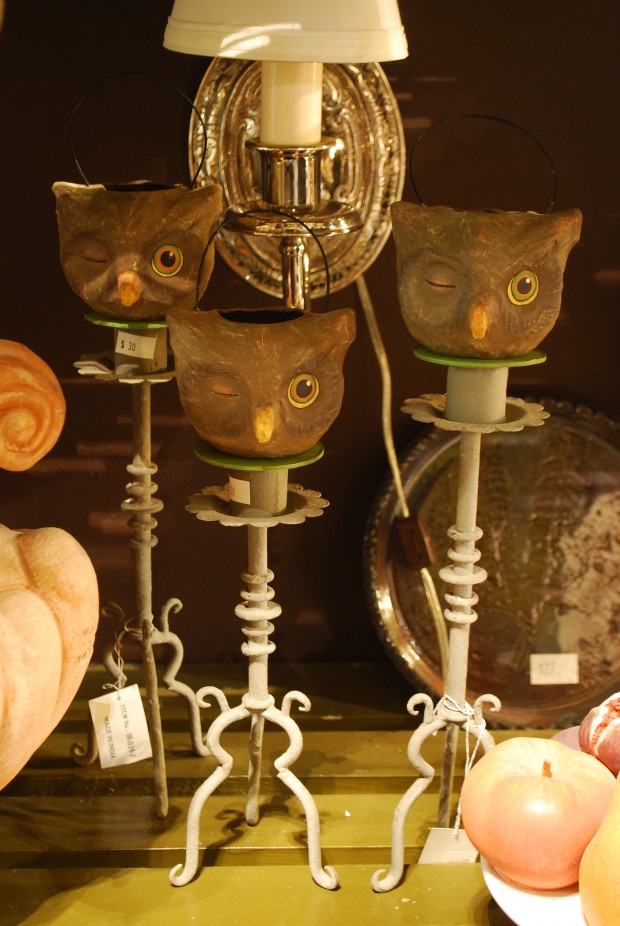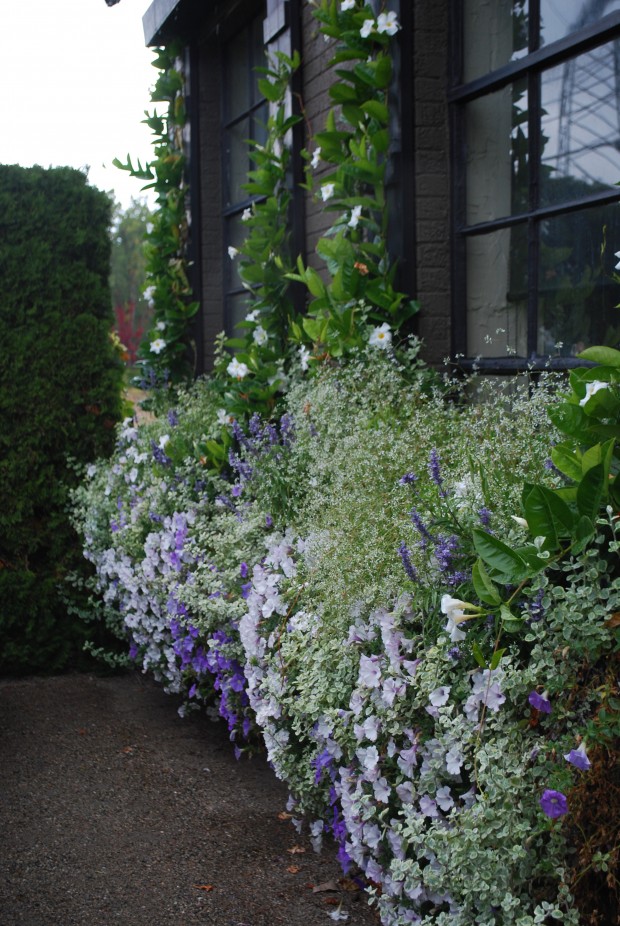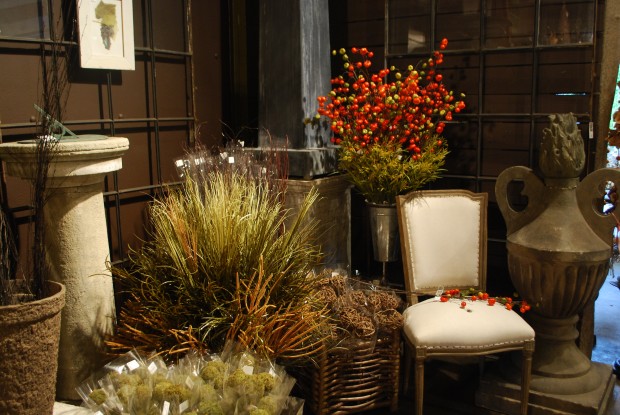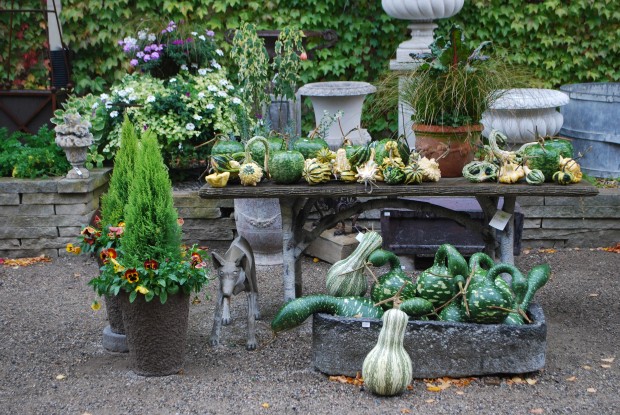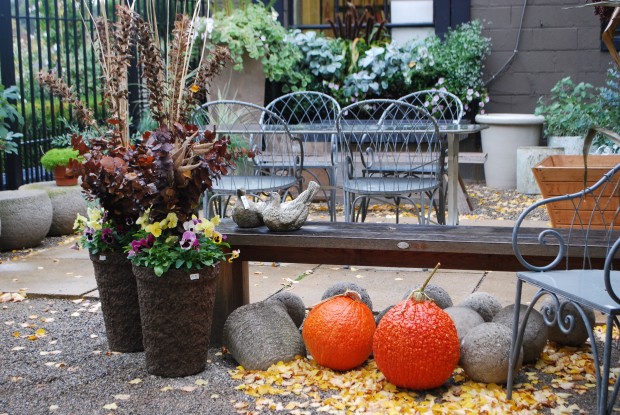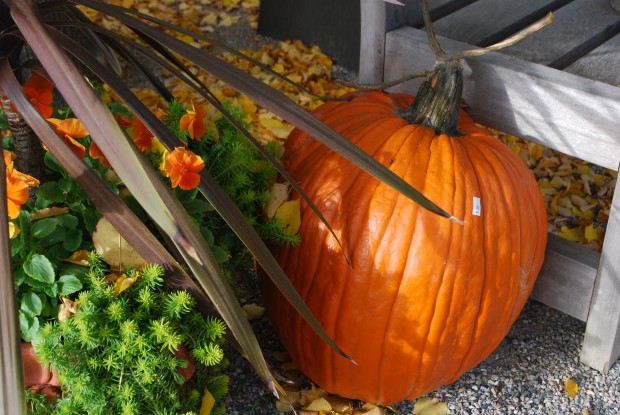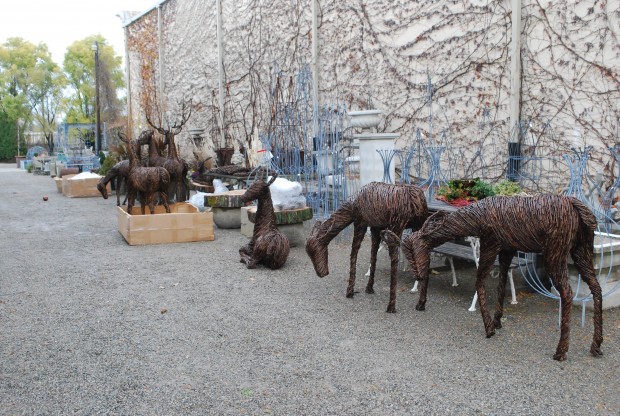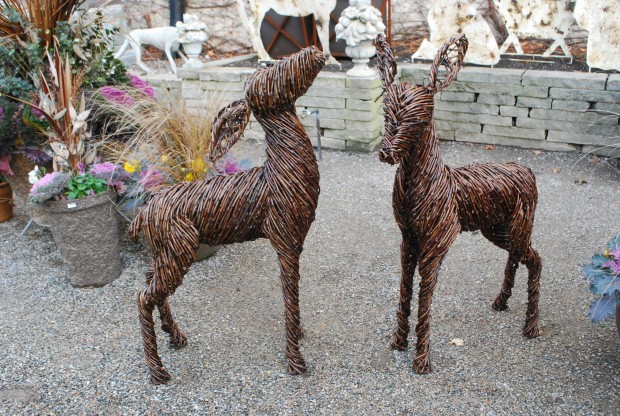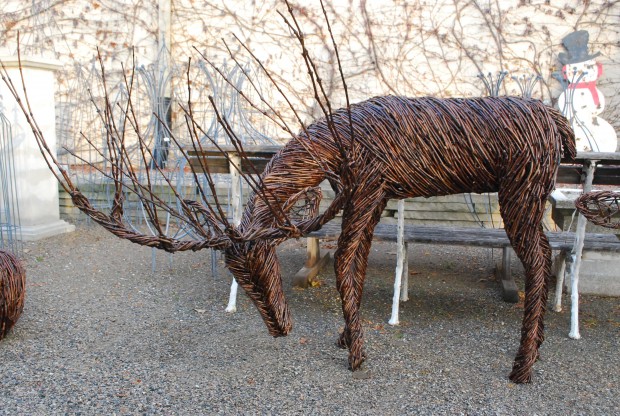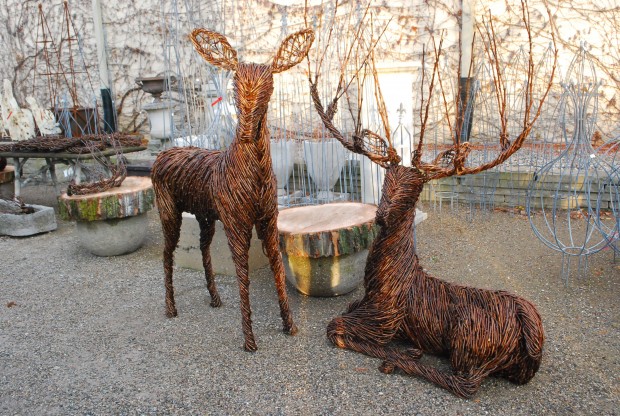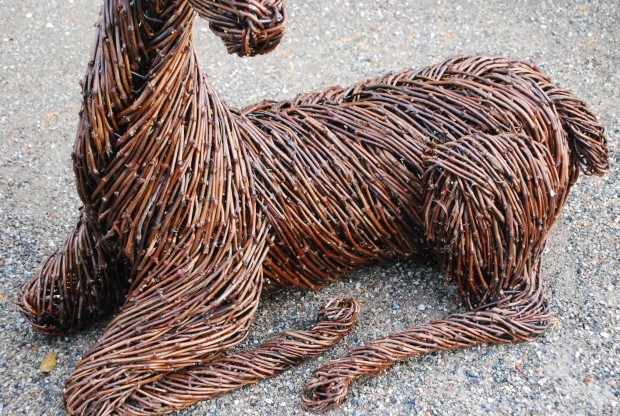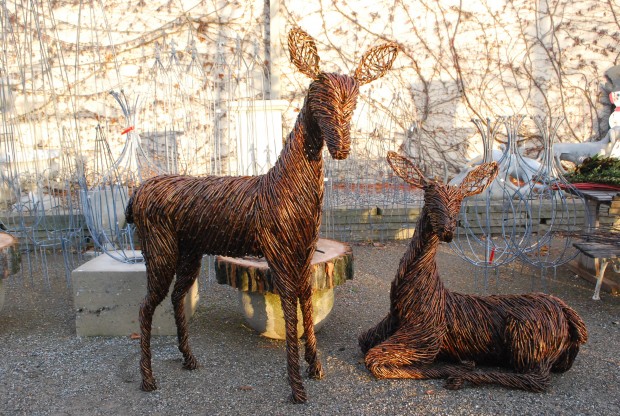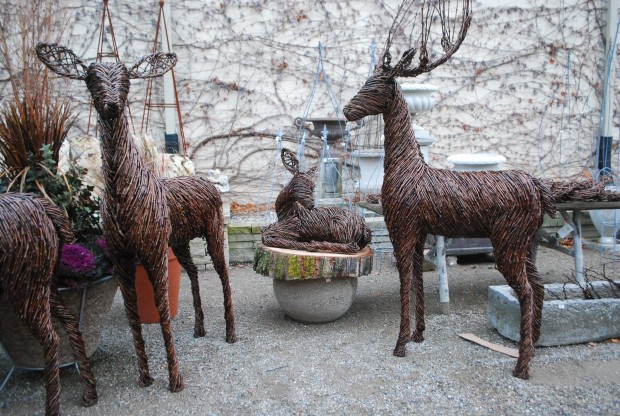If you garden, disappointment comes calling on a regular basis. Plants fail to perform as advertised. Violent rains flatten the delphiniums just as they are about to come into bloom. Japanese beetles are poised to devour every rose-and I mean every rose. An old and treasured lavender inexplicably gives up, and dies. A stone pot cracks, and goes over. Driven by some incomprehensible impulse, the child of neighbor picks all the buds off the lillies. A lawn service obliterates the ground level bark all around from a treasured paperbark maple with a weedwacker. A painter dumps his paint soaked turpentine all over a favorite hellebore. Slugs chew their way through an entire bed of hosta, one plant at a time. Overnight, mildew blankets the monarda. The tomatoes rot, or crack-or both.
The concrete aggregate terrace installed at great expense settles, and sinks. An old grape dies before you notice the bore holes riddling the trunk. An unexpectedly early frost kills an old lantana topiary you forget to take in. An irrigation valve springs a leak, all but drowning an old rhododendron. A pampered hydrangea refuses to bloom. Does not all of this sound familiar? Disappointment – I do not know any gardener who has managed to avoid it.
Our current gardening season has piled insult on top of the ordinary disappointment. A warm winter was a boon to the survival of insect and fungal spore populations. My roses rarely suffer from blackspot; I had a full blown text book case of it in April. A late April frost ruined every flower bud on 12 magnolia trees, and damaged some of the leaves and stems. Other gardeners lost Japanese maples, and young dogwoods altogether over that frost. The Michigan fruit industry suffered terrible losses on trees in bud and bloom too early. The heat and the drought in July-it is impossible to know which was worse. This is not my garden’s best year.
Other bad news of note. The virulent and deadly water mold, plasopara obducens, which has plagued impatiens plantings in Europe and Florida, is showing up all over the northeast and midwest. The downy mildew appears on the undersides of the leaves. The leaves of affected plants curl down and under. Eventually the stems collapse, and the plants die. I almost never plant impatiens, but I have plenty of clients who do. Plants can be sprayed with a fungicide as a preventative measure, but I have seen the disease this week on plants that had been sprayed. If you do have diseased plants, take them out, bag them, and put them in the trash. The spores of the fungus can live in the soil up to five years-do not compost these infected plants. And do not plant impatiens in that spot next year. What a disappointment this is to the many people who grow impatiens in their summer planting beds and enjoy them so.
No matter the disappointment, there is a flip side. I feel certain that the bedding plant industry will work very hard to eradicate this disease. Bedding plant breeders will study what makes New Guinea impatiens, and Sun patiens immune to it. There will be a number of competent and intelligent people putting their skills to work. There is an entire winter ahead for gardeners to learn about what other kinds of annual plants can provide color and interest in shady areas. There are ingenious people out there ready to do what it takes to circumvent adversity-you could be one of them.
Buck and I have been watching every day of the Olympic games, but for different reasons. He is interested in any and every sport. I am interested in any person with passion who determines a goal, and gives it their all. So, we watch. The effort of every athlete, and the families of those athletes, no matter their sport or their country, is extraordinary. Jordynn Wieber, the 17 year old captain of the US gymnastics team, the world champion gymnast, wobbled in the qualifying events for the overall Olympic medal in gymnastics. Only two US gymnasts can compete in this category. She was eliminated from this particular competition-she came in 4th, on the American team. She is a 17 years old, a young person who no doubt has devoted every moment of every waking hour for many years to that moment when she would compete in England. Her disappointment? I am sure it was utterly devastating. I felt so terrible for her. Under no circumstances could I have handled this level of demand and pressure when I was 17. I am heartbroken, for her.
That heartbreak expressed, I so admire her effort. Her years of effort. I equally regret how a person this young comes face to face with a disappointment most adults would struggle to deal with. I admire how she has handled her disappointment. First up, she cried. A good cry over any disappointment is probably healthy. My point here? My disappointment with my garden this year-nothing like Jordynn’s. Adversity? I have the feeling that after her tears, she will rise to the occasion. She is so like a gardener, don’t you think? The future for her, and for Michigan gardeners, is bright.
From Shakespeare,
Sweet are the uses of adversity,
Which, like the toad, ugly and venomous,
Wears yet a precious jewel in his head;
And this our life, exempt from public haunt,
Finds tongues in trees, books in the running brooks,
Sermons in stones, and good in every thing.
These lines written by Shakespeare in his play As You Like It – appropriate. The original meaning is not in any way directed to the disappointments gardeners face this moment, but I still take comfort in them. The good in everything part-timeless. Godspeed, Jordynn.
